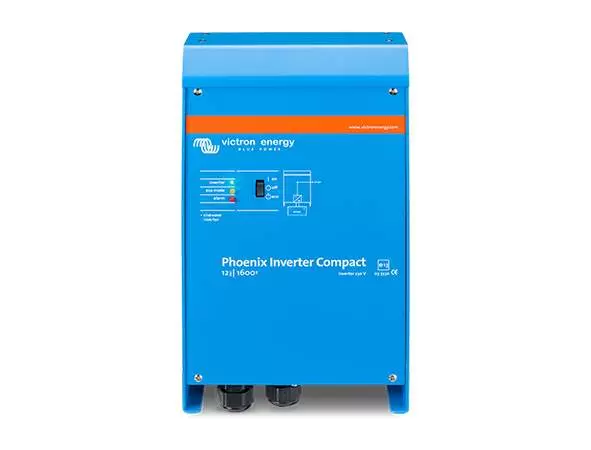In our tech-driven world, having a reliable power source is essential. Whether you’re camping in the great outdoors or setting up a home office, an inverter can be your best ally. Among various options, a 1500 inverter stands out for its versatility and efficiency. But how do you choose the right one? With so many features and types to consider, it might feel overwhelming. Fear not! This guide will explain everything you need to know about selecting the perfect 1500-w inverter for your lifestyle. Let’s dive into the essentials of powering your devices efficiently with the right inverter!
Understanding the Capabilities of a 1500-w inverter
A 1500-watt inverter is designed to convert direct current (DC) power from a battery into alternating current (AC) power, which many household devices require. This capability makes it ideal for various applications, from home use to outdoor adventures.
One significant advantage of a 1500-w inverter is its ability to handle multiple devices simultaneously. It efficiently powers everything from laptops and small appliances to lights and televisions. This versatility allows you to create a reliable off-grid electricity source.
Inverter performance depends on peak wattage as well. A 1500W model usually has a higher surge capacity, meaning it can manage short bursts of extra energy needed by some appliances when they start up. This feature ensures that your sensitive electronics operate smoothly without interruptions.
Moreover, these inverters have built-in safety features like overload protection and temperature control. These safeguards prevent damage to the inverter and connected devices.
Understanding how much power your devices consume helps optimize your setup with a 1500-w inverter. With careful planning, you can maximize efficiency and minimize waste while enjoying modern technology’s conveniences anywhere you go.
Key Features to look for in an 1500w inverter Model
Efficiency Ratings Matter
When choosing a 1500w inverter, it’s crucial to consider its efficiency ratings. Look for models with high energy conversion rates, ensuring minimal energy loss when converting DC power from your batteries to AC power for your devices.
Number and Type of Outlets
Another key feature is the number and type of outlets provided. A versatile inverter will have multiple AC outlets and USB ports, allowing you to power several devices simultaneously without hassle.
Essential Safety Features
Safety features should not be overlooked either. Ensure the inverter includes protection against overloads, short circuits, and overheating. Such safeguards are essential for both device protection and personal safety during operation.
Portability for Convenience
Portability can also be important if you plan on using your inverter while travelling or camping. Lightweight designs with built-in handles make transport easy, enabling you to set up power wherever needed.
Warranty and Long-Term Reliability
Check the warranty offered by manufacturers. A longer warranty period often indicates confidence in product reliability and performance quality over time, giving you peace of mind with your investment.
Comparing Modified vs. Pure Sine Wave 1500 Watt Inverter
When selecting a 1500-w inverter, one of the key decisions revolves around the type of wave output it provides—modified sine wave or pure sine wave. Understanding these options can significantly impact your power usage and device compatibility.
Modified 1500 watt inverter is generally more affordable and simpler in design. They produce a stepped waveform that resembles a sine wave but lacks smoothness. While they work well for many devices, they may not be suitable for sensitive electronics like medical equipment or high-end audio systems.
On the other hand, pure sine wave inverters deliver electricity that closely mimics utility power. This smooth power delivery ensures compatibility with virtually all electronic devices. If you’re using sensitive gadgets, investing in a pure sine wave, inverter can protect against potential damage caused by voltage fluctuations.
Another consideration is efficiency. Pure sine waves operate at higher efficiencies than modified versions, translating into better performance overall. This can be a crucial factor for those who prioritize energy savings and reliability over initial cost.
Your choice will depend on your specific needs and budget constraints. Weighing these factors carefully helps ensure you select an inverter that meets your demands and expectations.
Battery Compatibility and Efficiency for 1500-w inverters
Battery compatibility is crucial when selecting a 1500-w inverter. Not all batteries will work seamlessly with your inverter. Common options include lead-acid and lithium-ion batteries, each with distinct characteristics.
Lead-acid batteries are often more affordable upfront but may require frequent maintenance. They have a lower depth of discharge, meaning you can only use a portion of their capacity without risking damage. This can limit the efficiency of your power system over time.
On the other hand, lithium-ion batteries offer higher energy density and longer life spans. They allow deeper discharges without harming performance, making them more efficient for high-demand applications. However, they initially come at a higher price point.
Efficiency doesn’t just depend on battery type; it also involves how well they work together with your inverter. To maximize performance, look for inverters that specify compatibility with various battery types.
Consider the charging capabilities as well. An inverter that supports fast charging can significantly enhance overall efficiency by reducing downtime when recharging the battery after use.
Best Applications for a 1500-w inverter in Home and Travel
A 1500-w inverter is versatile, making it a valuable asset for home and travel use. At home, it can power essential devices during an outage. Whether you need to keep your refrigerator running or charge phones, this inverter ensures that your daily life remains uninterrupted.
A 1500-w inverter transforms your vehicle into a mobile powerhouse for road trips or camping adventures. You can run small appliances like coffee makers or microwave ovens without relying solely on battery power. This convenience enhances the overall experience of outdoor living.
If you’re using tools in the field, such as during construction projects or repairs, having access to an inverter allows you to operate various equipment easily. It provides reliable energy for drills and saws when there’s no grid connection nearby.
Portable inverters benefit remote work setups as well as recreational uses. You can set up anywhere—be it at a park or campsite—and still have access to electricity for laptops and other gadgets.
Many people find value in solar applications combined with their 1500-w inverters. These systems allow users to harness renewable energy while enjoying the flexibility of powering multiple devices simultaneously.
Installation Tips for Optimizing Your Inverter 1500W Performance
Proper installation is crucial for optimizing the performance of your inverter 1500w. Start by selecting an appropriate mounting location. It should be well-ventilated and away from direct sunlight to avoid overheating issues. Ensure there’s enough space around the unit for air circulation.
Next, pay attention to cable selection. Use high-quality cables that can handle the load without significant voltage drop. The gauge of the wire matters; thicker wires are better suited for higher loads. Ensure they are securely connected to prevent power loss and potential hazards.
When connecting the inverter to a battery, ensure correct polarity—positive connects to positive, negative to negative. Reversing these connections can damage your devices or even cause a fire hazard.
Consider adding fuses or circuit breakers to your setup as extra safety measures against overloads and short circuits. This small step can significantly prolong the lifespans of your inverters and devices.
Regular maintenance cannot be overlooked. Periodically check connections and clean terminals to minimize corrosion or buildup that might affect efficiency over time.
Energy Efficiency and Power Consumption Considerations
Energy efficiency becomes a key factor when selecting a 1500-w inverter. An efficient inverter minimizes wasted power and helps you get the most out of your battery. Look for inverters with high conversion rates, ensuring more stored energy is transformed into usable electricity.
Power consumption also plays an important role. Understanding how much power your devices require will help you avoid overloading your inverter. Each appliance has its own wattage needs, so it’s essential to calculate total usage before deciding.
Another consideration is operating time, which relates directly to efficiency and consumption. The longer you can run your devices on battery without recharging, the better for overall utility. For instance, choosing an inverter with lower idle consumption can extend the life of your battery during use.
Temperature also affects performance. Inverters work best within certain temperature ranges; extreme conditions may lead to inefficiencies or even failures. Proper placement in well-ventilated areas ensures optimal operation.
Always factor in surge capacity when assessing energy needs. Some appliances draw additional power at startup, and this spike must be accounted for when calculating overall requirements to ensure reliable operation.
Choosing the Best 1500-Watt Inverter for Your Needs
When selecting the best 1500-watt inverter, consider your specific power needs and what devices you plan to run. A higher startup surge requirement for tools or appliances may necessitate an inverter that can handle more than the continuous load.
Next, evaluate whether you need a modified or pure sine wave inverter. Pure sine wave models are ideal for sensitive electronics like laptops and medical devices as they provide cleaner electricity. Modified sine waves, while cheaper, might not always be suitable for such gadgets.
Battery compatibility is another crucial factor. Ensure that your chosen inverter matches the battery type you’ll use—whether lead-acid or lithium-ion—for optimal performance and longevity of both components.
Consider portability if you plan to use it in various locations. Some inverters have features like built-in handles or lightweight designs that make transportation easier without compromising power capacity.
Review customer feedback and expert recommendations before making a purchase decision. Real user experiences can reveal potential issues and advantages that specifications alone cannot convey.
Troubleshooting Common Issues in a 1500-w inverter
When using a 1500-w inverter, you might encounter some common issues that can disrupt its performance. One of the most frequent problems is overheating. If your inverter shuts down or shows warning lights, it may be due to excessive heat. Ensure proper ventilation and check for dust buildup in the cooling vents.
Another issue is poor battery performance, which impacts your inverter’s efficiency. Always verify that your battery is fully charged and compatible with the inverter specifications. A weak or faulty battery can lead to an insufficient power supply, causing the inverter to malfunction.
Inadequate wiring can also lead to significant problems during operation. Inspect all connections carefully for any signs of wear or corrosion. Loose connections may cause voltage drops, leading to erratic behaviour from your devices.
Sometimes, users experience unusual noises from their inverters—like buzzing or clicking sounds—which could indicate internal faults or overload conditions. Disconnect any unnecessary loads and listen closely; this might help pinpoint the problem.
Keep an eye on error codes displayed on digital models. These codes provide specific troubleshooting information about what’s wrong with your system and how you might resolve it effectively.
Conclusion
Choosing the right 1500 inverter can significantly enhance your power management strategy. Understanding your needs and the capabilities of different inverters is essential. Factors like efficiency, compatibility, and waveform type play crucial roles in performance. By prioritizing these elements, you’ll ensure reliable operation for your devices. Moreover, installation practices cannot be overlooked. Proper setup will maximize efficiency and prolong the life of your inverter. Taking a few extra steps during installation pays off later with enhanced functionality. Whether at home or on an adventure, selecting the best 1500-w inverter transforms how you manage energy use every day.
FAQs
When considering a 1500-w inverter, questions are bound to arise. Here are some common inquiries that users often have.
Can I use a 1500 inverter with my car battery?
Yes, you can use 1500 inverter. However, ensure your battery has enough capacity to handle the load without draining too quickly. It’s also wise to consider how long you plan to run your devices.
What is the difference between modified sine wave and pure sine wave inverters?
Modified sine wave inverters produce a blocky waveform that can power many devices but may cause issues with sensitive electronics. Pure sine wave inverters mimic the smooth current of grid power, making them suitable for all electronic devices.
Do I need any additional accessories for my inverter?
Depending on your setup, you might need cables or fuses for safety. Always check manufacturer recommendations for compatible accessories.
How do I maintain my 1500-w inverter?
Regular maintenance involves keeping it clean from dust and inspecting connections periodically. Additionally, monitor its performance during usage to catch any potential issues early on.
Are there specific brands that stand out when choosing an inverter?
While numerous brands offer quality products, it’s essential to look at user reviews and warranty options before deciding which one best meets your needs.
| Related Business Listings |
| Contact Directory |
| Local Business Profiles |




